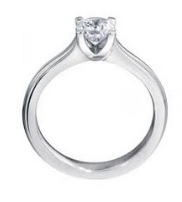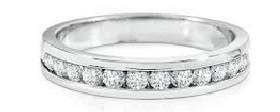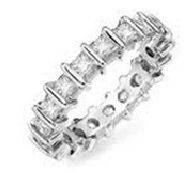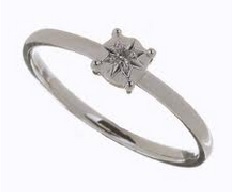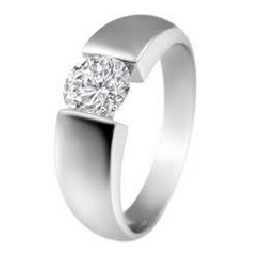Gemstone Setting
Gemstone setting is the art of setting or attaching gemstones into jewellery securely.
Generally there are two types of gemstone cutting: cabochon and facet.
- A cabochon is shaped and polished gemstone whose form is usually a convex top with a flat bottom. This type of cutting is commonly applied to opaque gemstones (turquoise, onyx, jade, opal) in order to show gemstone’s colour or surface properties. The typical shape of cutting cabochons is an ellipse.
- As a rule, a faceted gemstone has a shape of a diamond, with a thin edge (girdle), the upper flat part (crown), the lower portion (pavilion) and sharp point of pavilion (culet). Facets help improve the gemstone appearance by allowing them to reflect light. Often transparent to translucent gemstones are faceted (diamond, zircon, amethyst, rock crystal). There is a great number of facet arrangements used (round brilliant cut, marquise cut, emerald cut, brilliant pear cut, princess cut).
As with facet arrangements, there is vast diversity of gemstone setting styles. However there are few pivotal styles:
Claw Setting
Claw setting is one in which a series of metal prongs, called claws, hold a gemstone securely in a setting. This setting lets light in under the gemstone, so is usually used for transparent, faceted stones.
- Round and oval cut
- Princess cut
- Baguette an emerald cut
- Marquise and pear cut
- Heart cut
Pavé Setting
Pavé settings are made up of lots of small gemstones, often diamonds, set closely together. The gems are separated and held in place by little beads of setting metal. The result is what looks like a continuous surface of diamonds or other gems.
Channel Setting
Channel setting – gemstones are placed into a metal channel. The gemstones flow in a continuous row because no metal is used to separate them.
- Round cut
- Princess cut and baguette
Rub-over Setting
In a rub-over, or “bazel” setting, the diamond is wrapped within a collar of precious metal. Rub-over setting may also appear as a partial setting with a part of diamond being wrapped in the “collar” and the remainder exposed.
- Round cut
- Oval cut
- Princess cut and baguette
- Emerald cut
Bar Channel Setting
Diamonds and gemstones are set in separate settings between metal bars running perpendicular to the ring. The diamond or gemstone is locked in place by the metal bars.
Star Setting
A star setting is one in which a gem is set within an engraved star. The gem is secured by a small grain of metal.
Tension Setting
A diamond is held in place by the pressure of the band’s metal, which is designed to “squeeze” the stone.


